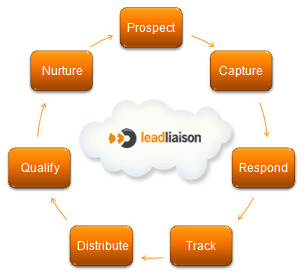Sales Automation Software
There’s a lot of talk on the web about marketing automation; consequently, sales automation gets left behind. Although, it’s arguably the most important thing! Are you looking to provide automation for your sales team? If yes, you’ve found the right corner of the web. Sales automation software helps organizations improve productivity, relationships and employee satisfaction – all key contributors to revenue generation. Three core technologies make up a sales automation software package. We’ll discuss these three technologies and to help you understand how software simplifies a sales person’s life and can get your company on the fast track to higher revenue.
The Ideal Way
Ideally, every business would fully automate their sales processes if they could. However, that’s not possible especially given the need for most B2B companies to personalize the sale. The “human touch” is often times a requirement, especially for B2B companies with transactional-based businesses. Regardless of your sales process almost every lead goes through the following lead management life-cycle:
Many of the pieces in the lead management life-cycle can be automated using sales automation software. Three key areas that must be automated to achieve an effective sales process are sales prospecting, lead qualification and lead nurturing.
Core Sales Automation Software Technologies
Automating Sales Prospecting
Sales automation software makes prospecting easy by integrating company, people, news, job, competitor, social media profiles and financials together in a single platform. Additionally, sales automation software natively integrates a professional contact database of millions of people making it easy for sales to find prospective buyers who match their target profile in a single click. With a second click, sales can import the contact along with their full contact information into their CRM.
Automating Lead Qualification
Sales automation software automatically qualifies leads by listening to a prospect as they interact with your marketing material. For example, monitoring a lead’s online behavior as they traverse your company’s website. When key buying signals are met and/or the prospect meets your qualification criteria they become a marketing qualified lead (MQL). At that point, the lead is ready for sales. Sales automation software quickly delivers leads to sales by sending a text message and/or email alert. Advanced sales automation software also pushes hot leads into a CRM such as Salesforce.com and automatically schedules a task for sales to follow up.
Automating Lead Nurturing
Sales automation software automatically nurtures leads to advance them through the sales pipeline. The majority of all sales people don’t have time to follow up with all their leads especially if the lead is not quite ready to buy just yet. Let’s say a marketing qualified lead is presented to sales via sales automation software, sales has a call with the prospect, but the prospect is in research-mode only. Nine times out of ten the sales person will take some notes, update their CRM and move on to the next hottest lead – the “archived” lead is forgotten. Lead nurturing automates the sales process by sending personalized (looking like it comes from sales and sent from one individual to another) emails over time to help sales build a relationship and connection with the prospect. More importantly, the prospect won’t forget about the sales person (and their solutions) either. When the prospect is ready to buy, sales will know.
Finding a great sales automation software package to deliver sales prospecting, lead qualification and lead nurturing is not easy. Fortunately, Lead Liaison has one. If you’re interested in sales automation software and much more let us know!
What part of the sales process not mentioned above would you like to automate?
To be alerted of future posts, please click on the RSS button.











